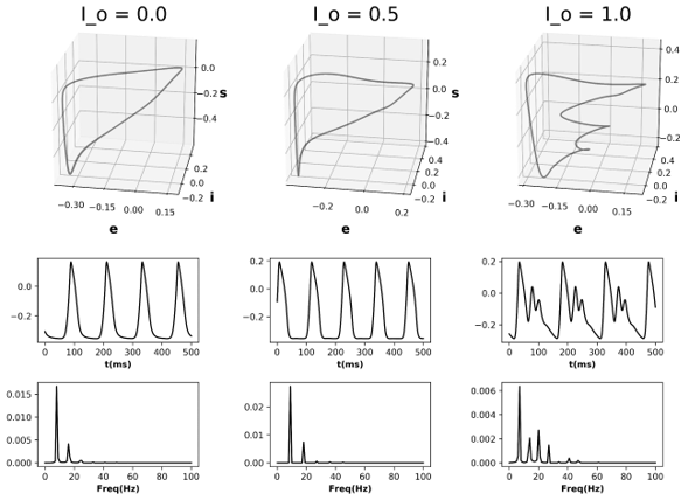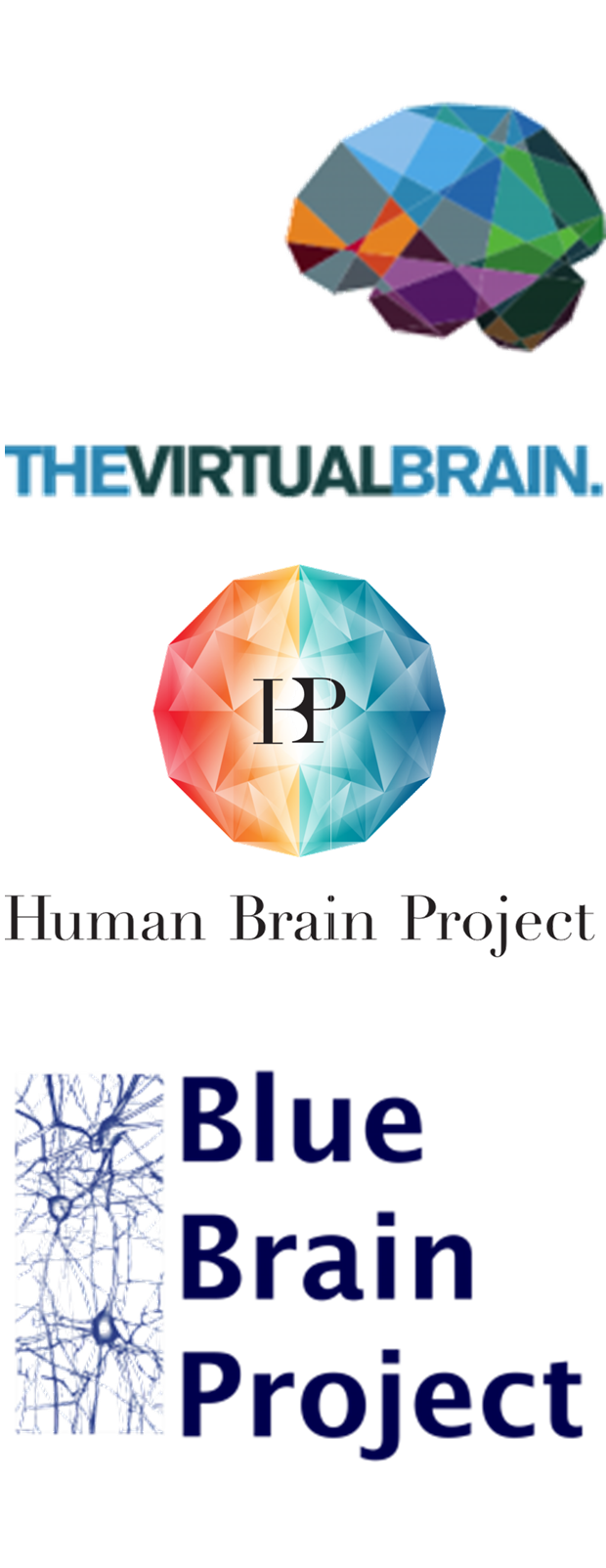
A main overarching theme of most of the work we do in the WBMG is meso/macroscopic computational models of neural dynamics. We use mathematical models describing neural population activity on the scale of millimetres to centimetres, together with network structure from macaque histology or diffusion MRI fibre tracking, to simulate (approximately) whole-brain activity measurements of the kind measured by fMRI and M/EEG. These techniques are gradually allowing us to obtain more mechanistic insights into observed patterns in neuroimaging data relating to the resting state, oscillations, and the impact of neurological and neurodegenerative disease. Much of our work in this area is done collaboratively with colleagues in the Virtual Brain, Human Brain, and Blue Brain Projects.
A specific area on which we are focusing is the generation and modulation of fast-timescale brain rhythms, as measured noninvasively by MEG and EEG.
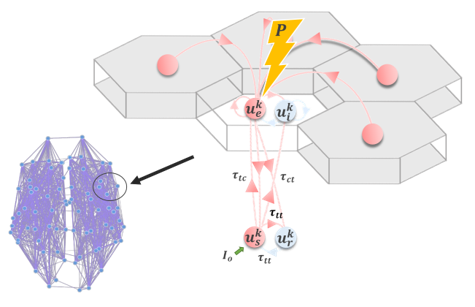
Together with Dr. Jeremie Lefebvre of the Sync Lab at the ‘other’ Krembil Research Institute (UHN Toronto Western Hospital), we have studied how low-frequency rhythms generated by delayed recurrent inhibition in thalamocortical loops interact with higher-frequency rhythms generated by intracolumnar excitatory-inhibitory interactions.
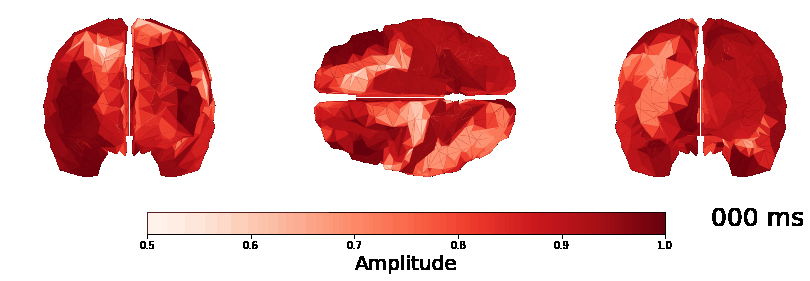
We find that a thalamocortical loop motif consisting of excitatory and inhibitory cortical neuronal populations, and excitatory (relay) and inhibitory (reticular) thalamic nuclei, can reproduce a large amount of the empirical pheonomena measured with resting state M/EEG. We are now investigating how the topological structure of the cortex interacts with the rhythmogenic properties of this base circuit motif.
A different line of work, done together with Prof. Peter Robinson and colleagues at the University of Sydney, focuses on macroscopic neural field models for large-scale brain dynamics. These are generally formulated in terms of second-order partial differential (wave) equations that are substantially simpler to work with analytically than the stochastic delay-differential equation numerically integrated in TVB simulations. In particular, we have studied the role of the spherical topology and physical embedding of the cerebral cortex on anatomical structure and dynamics.
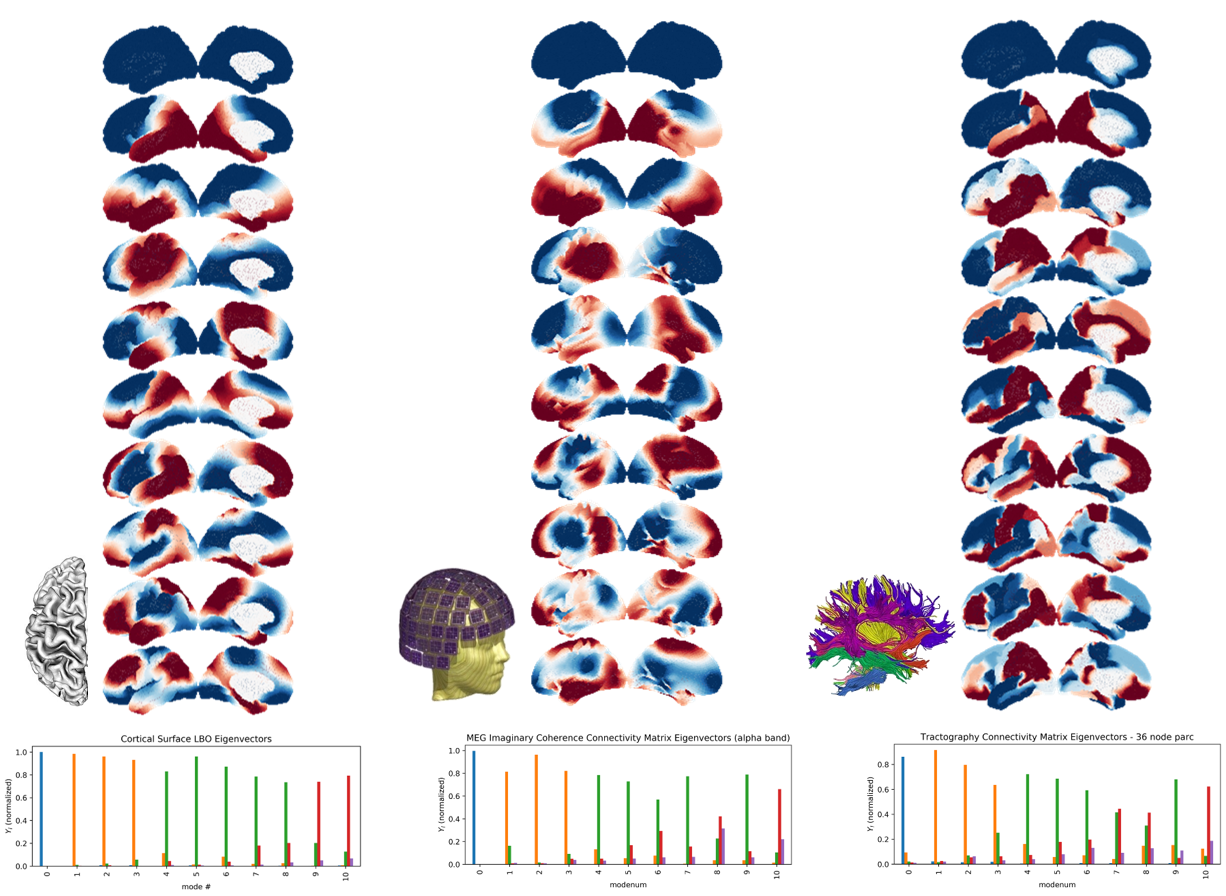
This, together with the steady-state eigenmode solutions to the Robinson neural field equations, predicts the presence of spherical harmonic-like patterns in fast-timescale activity measurements. Consistent with this, we have recently shown that this spherical harmonic-like spatial eigenmode structure is observed in cortical surface Laplacians, anatomical connectivity (tractography) networks, (MEG) functional connectivity networks, and numerical simulations. These results provide new insight into the role of the network topology and geometric embedding of the cerebral hemispheres in shaping brain dynamics, as well as the theoretical and practical utility of macroscopic neural field models with spherical boundary conditions.

